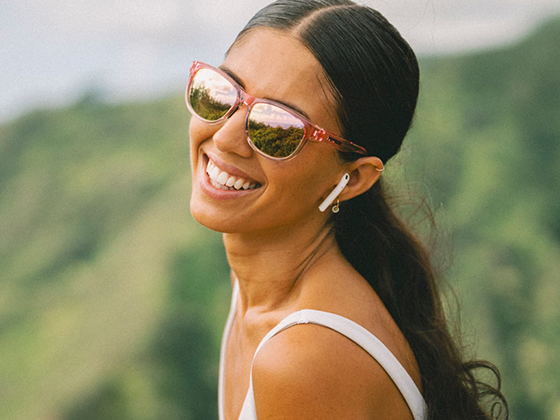Enhance Your Ride
The trails are calling and you must oblige. Mountain biking is a fast-growing sport that is a fun and exhilarating way to get out in nature. Like most sports, it requires skill and safety measures because crashes are not an IF, they are a WHEN. So before you go shred that trail, read on to see that you are properly prepared with these mountain biking safety tips.
The Gear:
Helmet: always, always, always, wear a helmet. Speed, banks, ditches, mud, jumps, drops, trees, rocks, roots, and turns are all reasons for mountain bikers to protect their noggins. This rule champions all others because wearing a helmet protects your very essential brain. For a correct fit, make sure it sits level on your head. It should be one to two finger widths above your eyebrows. The chin strap should be snug so that the helmet does not rock in any direction.
Protective glasses: Dirt, bugs, and branches hitting your eyes can not only damage them but can impair your vision thus causing a crash. Sunglasses help keep the elements out and protect your eyes from harmful UV rays. Make sure you purchase glasses with 100% UV protection. Lenses should be shatterproof in case of falls. All of Tifosi’s cycling sunglasses offer these protections.
Gloves: Give your hands an added layer of protection. Gripping can cause blisters; and falls can cause abrasions. Gloves have the added bonus of keeping your hands warm in cold weather and they soak up sweat when it is hot. Gloves come in full finger and half finger styles. Look for gloves that offer padding and grip.
Shoes: For every clipless shoe supporter, there is a flat pedal ally. Choosing your shoe is based on need, there is no right or wrong. Just make sure that you know how to unlock your clipless shoes from the pedal easily. With any shoe, tuck in your laces!
Body Armor: Some riders balk at the idea of wearing knee pads or body suits. There is a stigma that it is overkill and uncool. But know that this added layer of protection could keep you from a worse injury. There are many options of body armor. You can put on as much or as little as you are comfortable with.
Other Safety Tips:
Know the trail: If it is a new trail, take it easy. You can always hit it harder on the next go round. Always check trail status, skill level, and daily direction before going. You can find this information online and at the trailhead. A good rule of thumb is to ride with a buddy if the trail is new to you.
Know how to fall: No one wants to fall but it will happen. Take a lesson from a stunt person and know how to do it. Try to relax (easier said than done). This will help your muscles avoid injury. Don’t reach your arms out. Doing so puts all of your weight on your hand and arm bones, {{crunch}}. Try to tuck your head down and roll when you hit the ground. There is skill and benefit in knowing how to land an unplanned dismount!
Use common sense: Adrenaline can encourage us to be spontaneous. Ride within your skill level and get off of your bike and walk if necessary. Don’t take the jump that your buddies with more skill are landing. Always take water on your ride and drink it! Know the mechanics of fixing your bike and a little first aid. You never know when you might need these skills.
All sports have an inherent risk, but that shouldn’t stop you from doing what you love. Mountain biking is good for the mind and body. It’s a great way to get exercise and a sure way to clear your mind. A little preparation and knowledge can make your day on the trail much safer!





